Brazil
History records that on 1 January 1501, Portuguese navigator Gaspar de Lemos discovered Guanabara Bay. Indigenous peoples who inhabited the region called the place, in their Tupi-Guarani language, “Iguaá-Mbara” (iguaá = creek of the river, and mbará = sea), or “guana” (breast) bara (sea), “breast of the sea”, in allusion to its rounded shape, and abundance of fishing.
At the end of the 16th century, Father Fernão Cardim described it as follows: “… inside the bar there is a bay that looks like it was painted by the supreme painter and architect of the world, Our Lord, God”.
The city of Rio de Janeiro was founded in 1565, in the interior of Guanabara Bay, after the Portuguese expelled the French from “France Antarctique”, a colony founded by French Vice-Admiral and Knight of Order of Malta Nicolas Durand de Villegagnon.
The importance of Rio
Due to its excellent position on Brazilian coast, and its ability to house a large fleet, the city became the seat of Colonial Government in 1763.
Threated by the imminent invasion of Portugal by Napoleon’s troops, in 1808 the Portuguese Royal Family moved to Rio de Janeiro, which became the capital of Portuguese Empire.
On that occasion, ports of Brazil opened to friendly nations, which intensified navigation and trade with the Country.
South way of this portentous bay, there are countless islands, integrated to geological constitution of the region, whose mountain chains surround Guanabara Bay, forming a spectacular natural amphitheatre, according to the narratives of foreigners who were here, at the time of Colonial Brazil.
In one of these islands, called Rasa, 7.6 nautical miles south of the entrance to the bay, the “Board of Commerce, Agriculture, Factories and Navigation”, created in 1808, ordered a fire be lit in the highest part of island to guide navigators who came to the city of Rio de Janeiro.
The need of a large approach lighthouse became urgent, and in 1819, at the request of that entity, D. João VI authorized its construction.
Established 1829
The tower was completed in 1825, but its inauguration was postponed. Argentine corsairs attacked the ship that was transporting the optical apparatus from France, and the inauguration only happened on 31 July, 1829, with great delay.
As there is no drinking water on the Island, a cistern was built with capacity of more than 10.000 litres to collect rainwater in the lighthouse courtyard.
In the meantime, Brazil had become independent from Portugal in 1822, and this lighthouse was the first to be inaugurated after Independence, which gives it the nickname “Lighthouse of Independence”.
Since then, Rasa Lighthouse sweeps darkness of night with its luminous rays of two white flashes and one red flash, guiding navigators demanding the placid, sheltered and safe waters of Guanabara Bay.
This lighthouse served the Capital of Brazil until the end of Empire in 1889, and until 1960 during the Republic, when the Capital was transferred to Brasília, in the heart of Country.
In the year of 1910, a Marconi telegraph station was installed there, and in 1949 a Radio Beacon system was added to the Lighthouse.
Rasa Lighthouse has been manned since its inauguration, and it also has a meteorological data collection station, as well as a DGNSS station.
Characteristics
The intrinsic characteristics of this lighthouse are impressive. Its robust main tower is square with ashlar walls measuring 9.5 metres on a side and 1.3 metres thick. The lantern is supported on a cylindrical section of 7.5 metres in diameter. The total height of the tower is 26 metres and the focus of the lens is at an altitude of 101 metres. Its mesoradiant lenticular apparatus allows a luminous range of 51 nautical miles for white flashes and 45 nautical miles for red flashes.
Due to its location, historical importance, and heritage nature characteristics, Ilha Rasa Lighthouse is in foreground of 20th IALA Conference Logo.
A virtual tour of it was developed to be a parallel and extra event to the Conference, allowing the visit of IALA Family attending the Conference, as well as schoolchildren and people with special needs.
An invitation to the 20th IALA Conference
We would like to invite you to join us and participate in this memorable IALA Conference organized by Brazilian Navy so you will have the opportunity to virtually in 3D with immersive reality, parachute over “Ilha Rasa” for a visit to this historic lighthouse that will soon Bicentennial.
Pictures & captions
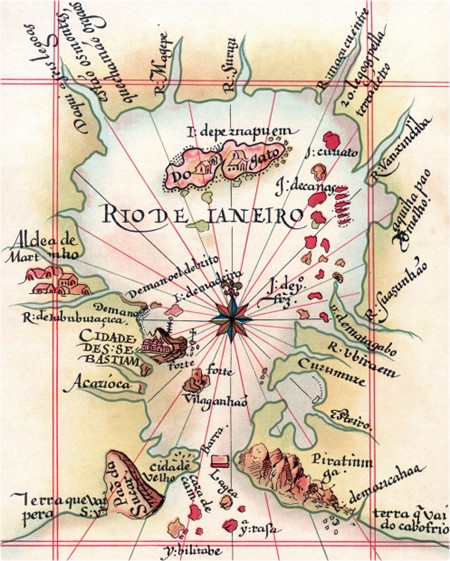
Bay of Rio de Janeiro and City of São Sebastião – “Route of all the signs, knowledge, depths, lows, heights and defeats that there are on the coast of Brazil from Cape Santo Agostinho to the Strait of Fernão de Magalhães – by Luís Teixeira – circa 1574.
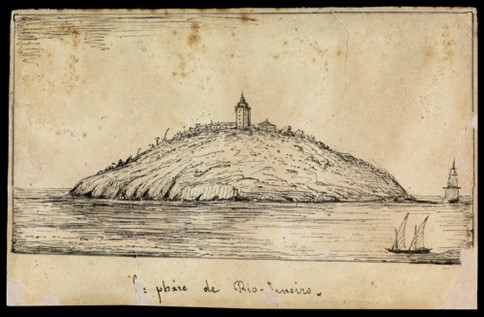
Le phare de Rio-Janeiro – Drawing, ink, b/w, 5.5 x 10.3.
Available at:
http://acervo.bndigital.bn.br/sophia/index.asp?codigo_sophia=13813
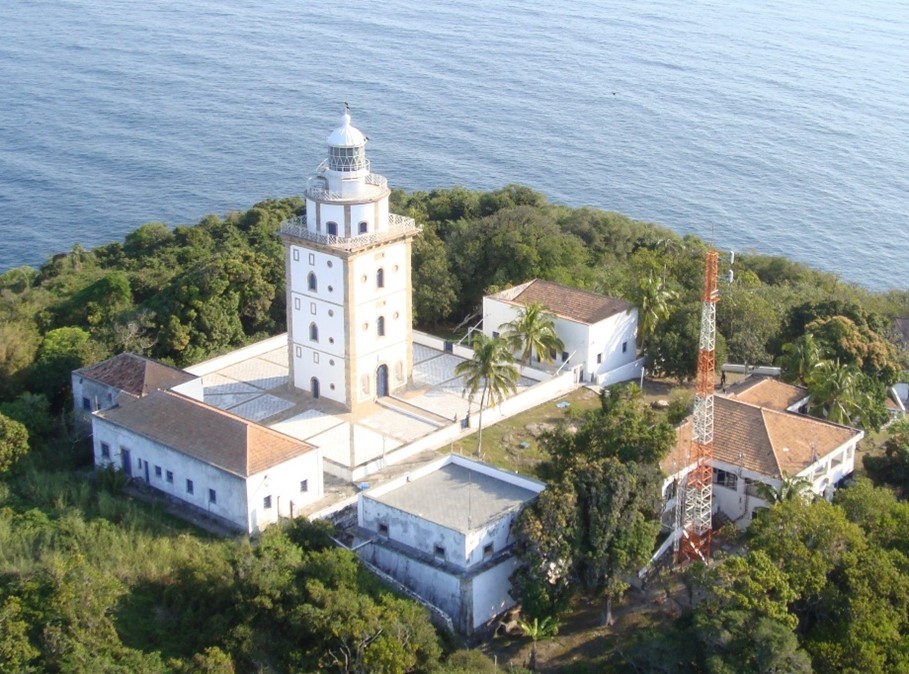
Ilha Rasa Lighthouse = Photo by Lieutenant Commander Daniel Drumond Gama – Brazilian Navy Aids to Navigation Center “Almirante Moraes Rego.
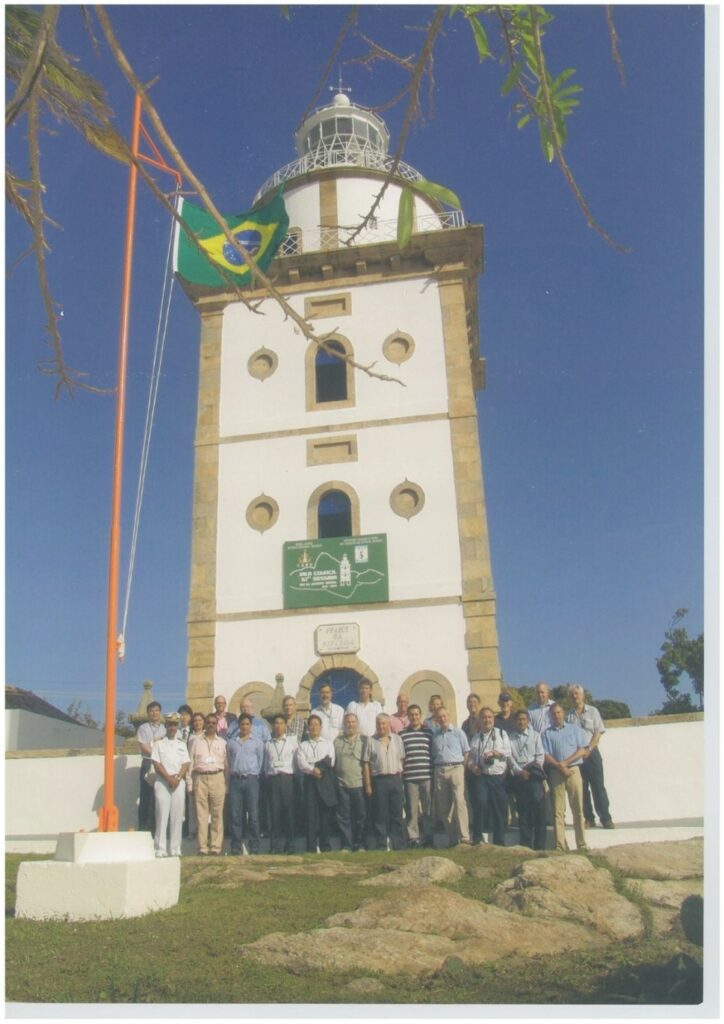
51st IALA Council – Jun 2011 – Photo by Flávia Maria
Brazilian Navy Aids to Navigation Centre “Almirante Moraes Rego”.
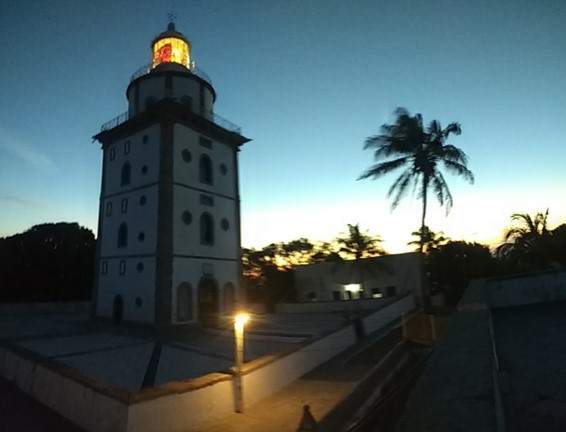
Sunset at Ilha Rasa Lighthouse – Author: Lighthouse Crew,
Brazilian Navy Aids to Navigation Centre “Almirante Moraes Rego”.
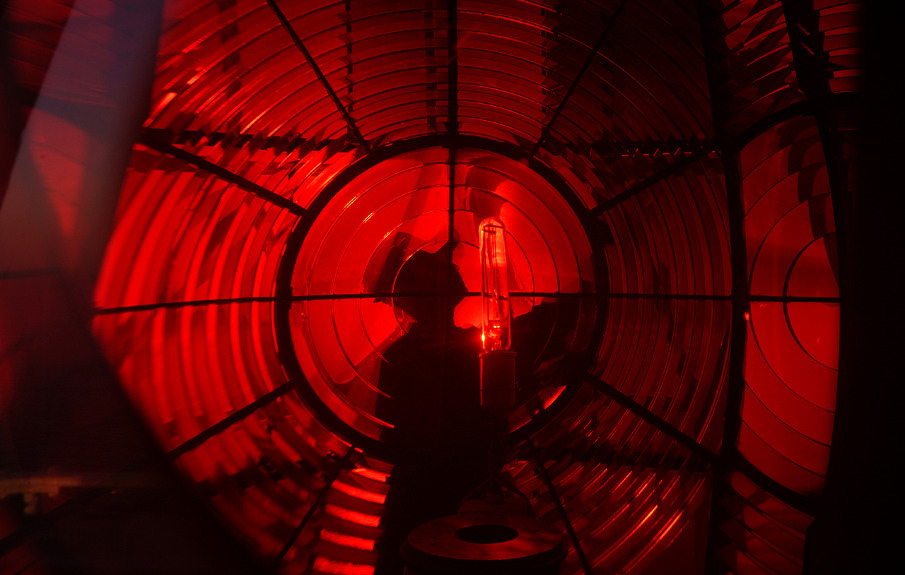
Mesoradiant Fresnel Lens at Ilha Rasa Lighthouse – Author: Lighthouse Crew,
Brazilian Navy Aids to Navigation Centre “Almirante Moraes Rego”.
Author: Alberto Piovesana Jr
Rapporteur: Paul Ridgway
